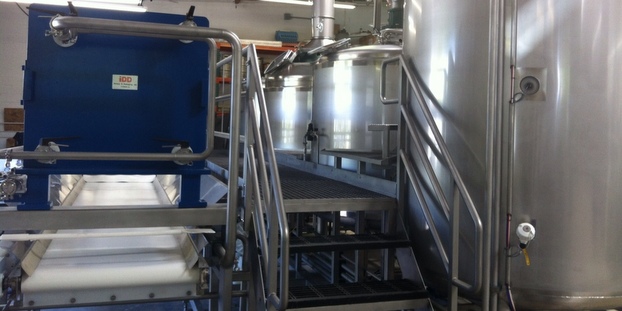
As the saying goes, it’s not the size of the brewhouse that matters, it’s the level of efficiency. Oh, you never got that one? Well, doesn’t make it any less true, which is why we wanted to highlight a couple of these less heralded but ultra-efficient brewing systems that just may lead to the process gains and savings your fledgling brewery needs.
For the high efficiency brewing system (HEBS), the name says it all. The system comes in four sizes (1 hl, 20 hl, 30, hl and 40hl), but the 20 hl is the most popular among customers, According to Jeffrey Gunn, president and CEO for IDD Process & Packaging, this 20 hl system (about 17 bbls) will match up favorably with an equivalent 30 bbl system due to its innovative construction — and can just about double in output to achieve up to 100,000 bbls per year.
“We use 60% less water than a typical mash/ lauter tun brewhouse; we operate with a 95-98% mash efficiency, much higher than mash lauter tun systems,” said Chris Anderson, chief operating officer and brewmaster of Coachella Valley Brewing, which has a current annual capacity of around 7,500 bbls annually. “The boil kettle is jacketed and has an internal collandria, so the boil is quite intense, and we often boil for just 45 minutes without any DMS issues. Obviously with a shortened brew day, the gas consumption to operate our steam generator is lessened by roughly half the time.”
Brewing Vessels Reviewed: Commercial lauter tuns with Wolfgang Roth
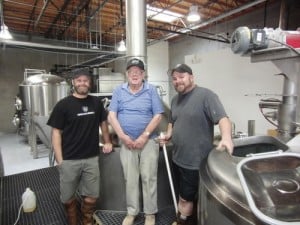
Coachella is using a 20 hl brewhouse that yields between 40 and 80 bbl batches. Anderson says they have three 40 bbl fermenters and two 40 bbl bright beer tanks, as well as three 80 bbl fermenters and one 80 bbl bright beer tank tank.
“We have achieved the goal of flexibility in our beer production, bettered the expected mean-time between batches and get all our work done with myself and two brewers,” echoes Scotty Morgan, head brewer at Rocks Brewing Co., located in Alexandria, Australia. For Morgan, as great as the mash efficiency is the bonus of brewing flexibility. “There are no 5 a.m. starts and late finishes. My two brewers complain if we are only doing one brew in a day. We deliberately compress all brewing in the early part of the week so we can go eat Pho on a Friday lunch time.”
Pho Fridays are something to celebrate. Morgan and Mark Fethers, owner and founder, got there after eschewing the traditional system they were using, which needed about 270 to 290 minutes in between brews, for their new HEBS, which only needs 130 to 180 minutes.
“We are no longer wort production slaves,” Morgan said. “Coming from a homebrew background, 99 percent of the focus is making wort and the mash tun, with little attention to fermentation and packaging. On the pro scale, you spend an enormous amount of time trying to get wort out, and it can be the greatest bottleneck in the brewery when you are under pressure. What the HEBs does is restore the balance and normalizes wort production, with greater time allowed on downstream activity where we have plenty to do to get the best beer to market that we can.”
Mash filter efficiency
The key to the HEBS is the mash filter. Traditional mash lauter tuns incorporate water and grain together, then the mash sits for an hour saccarafication rest, during which time the grain settles on the screen and allows for the layer of grain to act as a filter bed. The liquid is recirculated to develop clarity and lessen turbidity of the wort. At that point, the wort is run to the kettle and the sparging or rinsing of the mash begins. This will continue until most of the sugars have been rinsed from the grain bed. Some sugar and water are left behind in the grain and discarded in the form of spent grain.

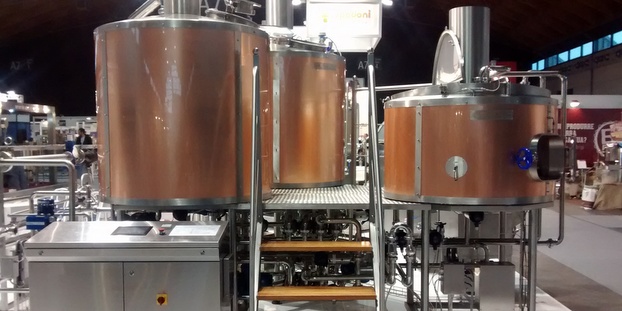
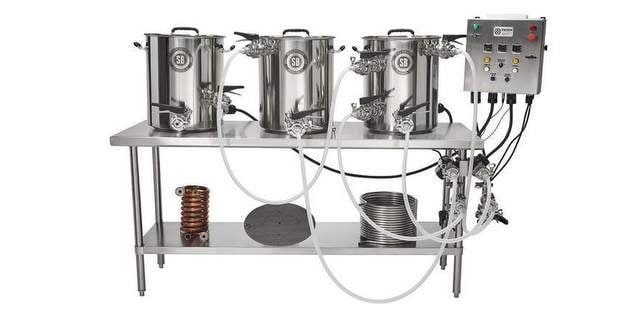
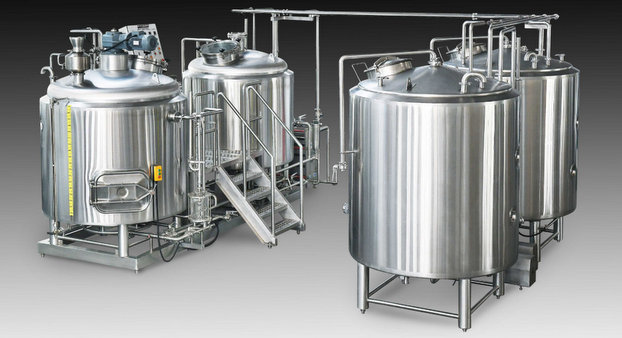
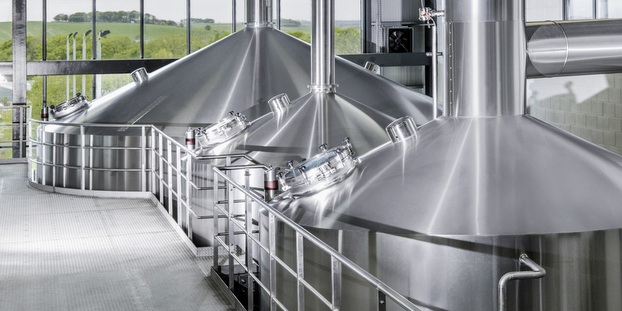

Dale Lewis liked this on Facebook.
Carter Baptiste liked this on Facebook.
Keith Allen liked this on Facebook.
Jared Read liked this on Facebook.
Alexander Couch liked this on Facebook.
Jeff King liked this on Facebook.
Otter Bank Danni Trap
is it nearly mini macro brewing?
I think we could make up something like that out of a few dairy tanks!
Jeff Platt liked this on Facebook.
Craft brewers discuss power of high efficiency brewing system http://t.co/N2KXFPdCPc via @craftbrewingbiz